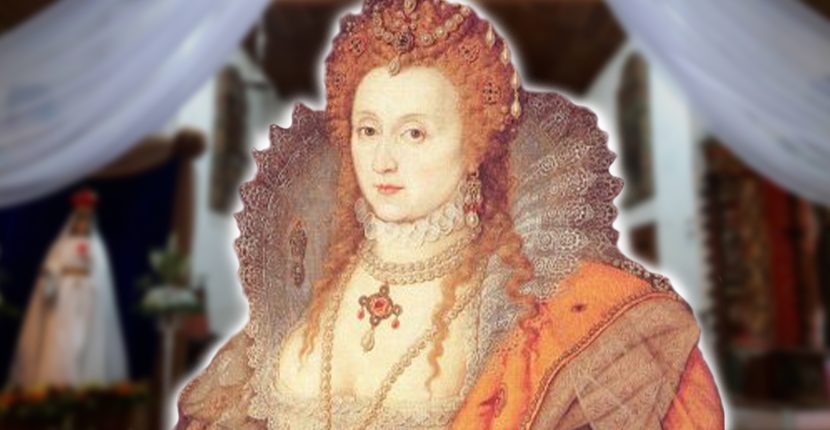Quite possibly the only surviving remnants of a dress worn by Queen Elizabeth I are about to go on display. Of the many objects from history that are being preserved, textiles are one of the most difficult. Unless the item is carefully protected throughout the years, moths, creasing, light and humidity can ruin delicate fabrics. It’s difficult enough to keep clothing from the 18th and 19th centuries much less during the reign of Elizabeth I which lasted from 1558 until her death in 1603. Eleri Lynn, curator of historic dress at Historic Royal Palaces in England believes that is exactly what she has found.
Gowns for royalty were so costly they were often repurposed or given as gifts to members of the court. There were often precious jewels and threads of silver and gold making up the sumptuous gowns. Elizabeth especially liked pearls in honor of her mother, Henry VII’s second wife, Anne Boleyn, who favored them.
In a portrait done by Marcus Gheeraerts the Younger about 1600, sometimes called the “Rainbow Portrait”, Elizabeth is wearing a colorfully hand embroidered dress adorned with flowers, insects, forest animals and most importantly, a small bear matching an illustration that Lynn had seen in previous research in a book from 1594.
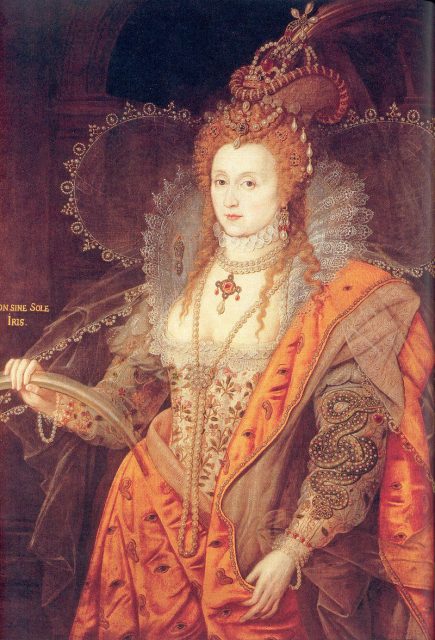
When Elizabeth had grown tired of certain items of clothing, it is known that her favorite lady in waiting, Blanche Parry, was given some dresses. Now for the first time actual pieces of a dress worn by Queen Elizabeth I is believed to have been identified. The embroidered silk of the cloth, which feature gold and silver thread, had been used as an altar cloth for centuries in Herefordshire. It is thought to have come to the town of Bacton though Elizabeth’s close associate Blanche Parry.
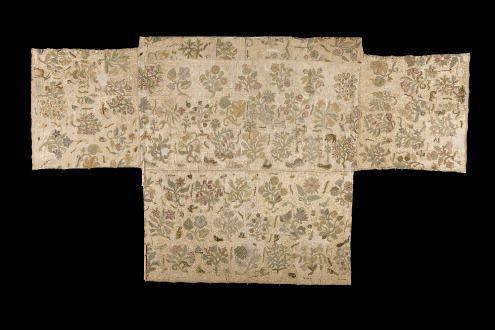
“When I saw it for the first time I knew immediately that it was something special. As I examined it, I felt as though I had found the Holy Grail, the Mona Lisa of fashion,” curator Eleri Lynn of Historic Royal Palaces told The Telegraph, when the cloth was first discovered in 2017. But only now has it been identified as most likely belonging to the famous Queen.
“None of Elizabeth I’s dresses are known to have survived, but everything we have learnt since then points to it being worn by Elizabeth.”
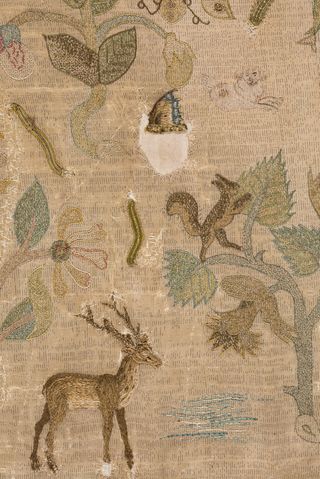
During her reign, Elizabeth elevated these laws to include restrictions on collar and sleeve ruffs, hosiery and the length of swords worn to court. It was commonly understood that no one should ever be dressed better than the Queen. Even her court attendants were instructed to wear subdued clothing for fear of offending the vain Elizabeth.
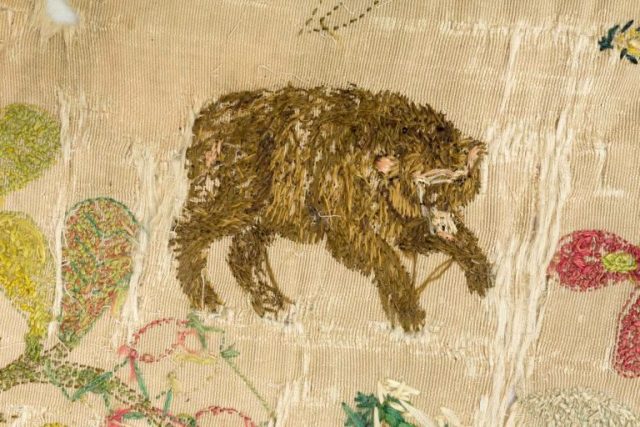
These laws prohibited Parry from wearing any of the dresses given to her by the Queen so Lynn believes Parry cut the silver chamblet fabric, made of silk, wool and linen which she may have helped to embroider herself, and presented it as an altar cloth at 13th century St. Faith’s Church in Bacton, Herefordshire where she worshipped or it was possibly sent to the church by Parry’s friends at court in memory of her.
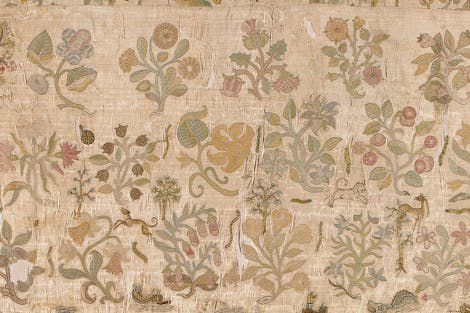
In 1909, Reverend Charles Brothers of St. Faith’s had the cloth framed because he also believed it had been part of Queen Elizabeth’s wardrobe long before Lynn’s research work.
While there is no concrete evidence that the slips of fabric were worn by the Queen, circumstantial evidence abounds and the experts are convinced. The cloth is the correct type for the late 1500s; the embroidered images were popular at that time; the style of the embroidery which is no longer practiced; the lady in waiting in question was a part of Elizabeth’s life almost since birth; the church elders possibly having the knowledge of the fabric’s origin and the close resemblance to the fabric of a dress known to have been worn by Queen Elizabeth I.
Related Video:
After the English Civil War ended in 1649, Oliver Cromwell temporarily ousted the monarchy from England and appointed himself Lord Protector of England, Scotland, and Ireland. He sold much of the royal collections to finance his takeover which makes finding something from the Tudor Dynasty that much more important.
Related Article: The Incredibly Realistic Face of Queen Elizabeth I
After extensive restoration the precious fabric will be displayed at Hampton Court Palace, Elizabeth’s residence, from October 12, 2019 to February 23, 2020 along with the Rainbow Portrait on loan from Hatfield House in Hertfordshire and a reproduction of the gown as the Virgin Queen would have worn it. You can find more information on the exhibit and how to visit at hrp.org.uk.
